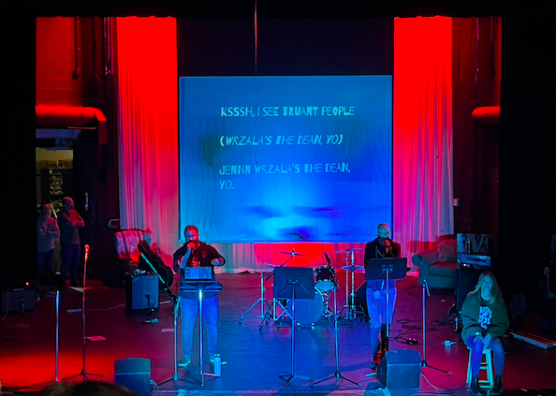The James Webb Space Telescope reveals more details about our vastly unknown universe
September 23, 2022
Launched on Christmas, the James Webb Space Telescope (JWST) has made multiple news headlines and articles, astonishing the world with its technological advancements. Most of these discoveries allowed scientists and astronomers to see things never seen before by any other telescope, some of which are an upgrade from the famously known Hubble Telescope.
Every discovery awaits scientific peer review, which the National Aeronautics and Space Administration (NASA) describes on their website as a long quality-control system, allowing experts to peruse the findings before releasing them to the public. However, due to the way that the scientific publication landscape has changed over the past decade, they publish draft articles and images called preprints, which, in short, is a preview stage before the detailed examination. Outside science communities may include discussions about the provided articles that allow experts to use this feedback for written improvements. Starting on Sept. 19, NASA plans to reveal a new Webb image or spectra at least every other week.
On Sept. 6, JWST had caught the largest and brightest star-forming region in the Local Group located only 161,000 light-years away, nicknamed the Tarantula Nebula. A nebula is an enormous cloud of gas and dust that becomes a star-forming region. What is intriguing to astronomers is that this nebula contains a comparable chemical composition to the vast star-forming regions studied at the universe’s ‘cosmic noon’. A cosmic noon is when galaxies suddenly start to form stars faster than usual. In other words, it’s an astronomical star growth spurt. Also, star-forming regions in our Milky Way galaxy are not producing stars at the same intense rate as the Tarantula nebula, and they both contain different chemical compositions.
This makes the Tarantula Nebula the closest example of what is happening in the universe. The official NASA site announced that Webb would continue to provide astronomers opportunities to compare and contrast the star formations in this nebula with Webb’s observations of distant galaxies. Despite all this new information about star formations, the process still contains many mysteries. Most of them are due to the inability to get clear images of the process behind the scenes. JWST is only the first step into rewriting the stellar formation story and revealing a universe never seen before.
On July 12, JWST showed its ability to analyze an exoplanet’s atmosphere more than 1,000 light years away, nicknamed WASP-96 b. WASP-96 b is a hot, puffy, gas giant planet orbiting a Sun-like star, and it is one of more than 5,000 confirmed exoplanets in the Milky Way, located roughly 1,150 light-years away. WASP-96 b orbits extremely close to its sun, completing one orbit every 3 ½ Earth days. These factors, from the short orbital period to the lack of contaminating light from objects nearby in the sky, make WASP-96 b the perfect target for atmospheric observations.
It’s said that Webb, using its enormous 270-square-foot mirror, sensitive detectors, and precise spectrographs, has revealed evidence for clouds, signatures of water, and haze indications on WASP-96 b, all in one single observation. These JWST specs and measurements can be found on the NASA Webb vs. Hubble Telescope comparison webpage. Compared to Hubble through previous observations, these features were believed not to exist until Webb provided a glimpse of the future of exoplanet research using its intense specs and functions. This illustrates how Webb can construct the most detailed (to date) observations of atmospheres hundreds of light-years away.
While the Hubble analyzed numerous exoplanet atmospheres over the past two decades with the first detection of water in 2013, Webb’s clear and immediate observations make a giant leap to characterizing potentially habitable planets beyond Earth. On June 21, Webb measured light from WASP-96 b for 6.4 hours as this exoplanet moved across the star. The outcome is a dimming light curve that contains features we already knew existed from previous observations, like the size and orbit. It did not show hidden details like signatures of water, haze indications, and cloud evidence.
JWST’s extremely detailed abilities provide hints of what the universe has in store for us. Webb will solve mysteries in our solar system, look far beyond distant worlds, and probe the mysterious origins and structures of the universe, all with our place in it.



